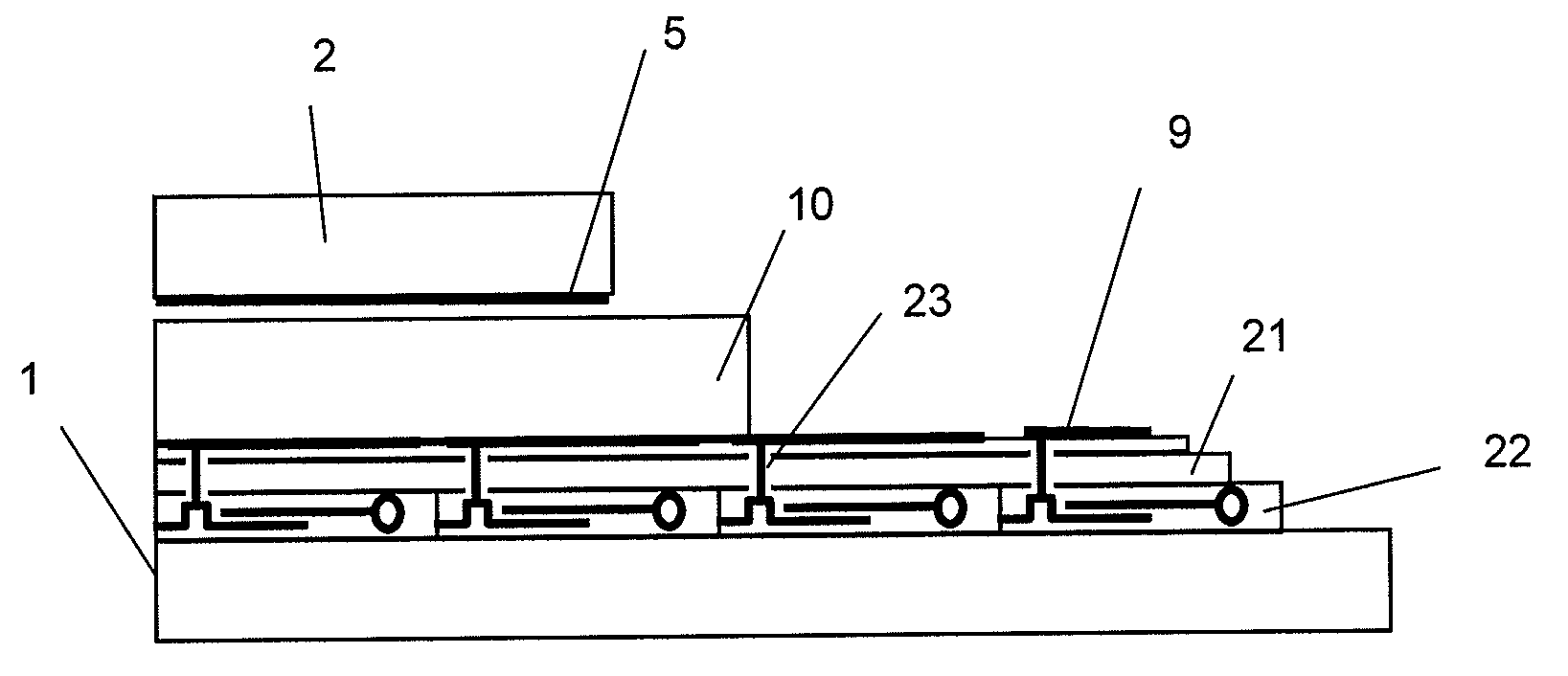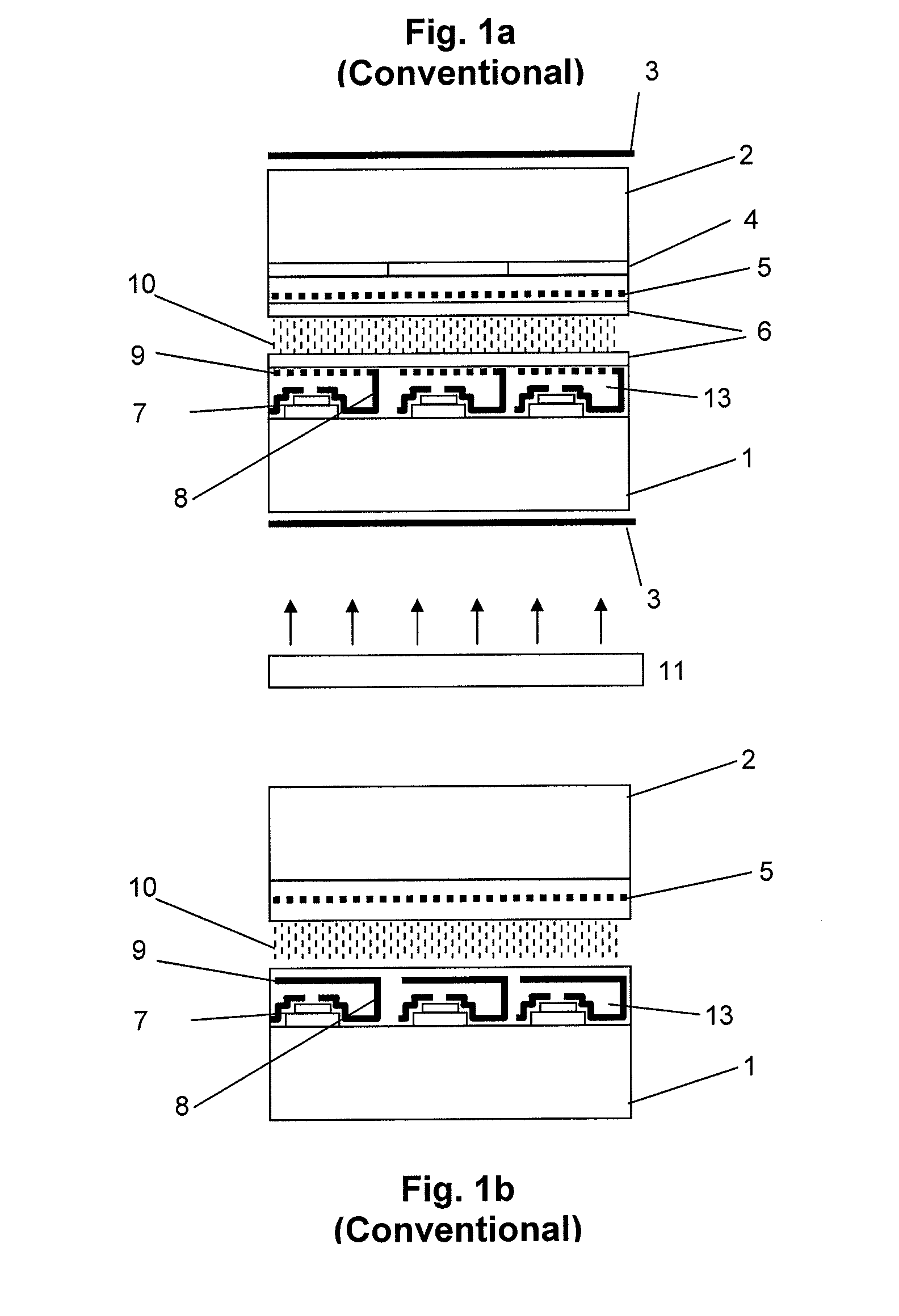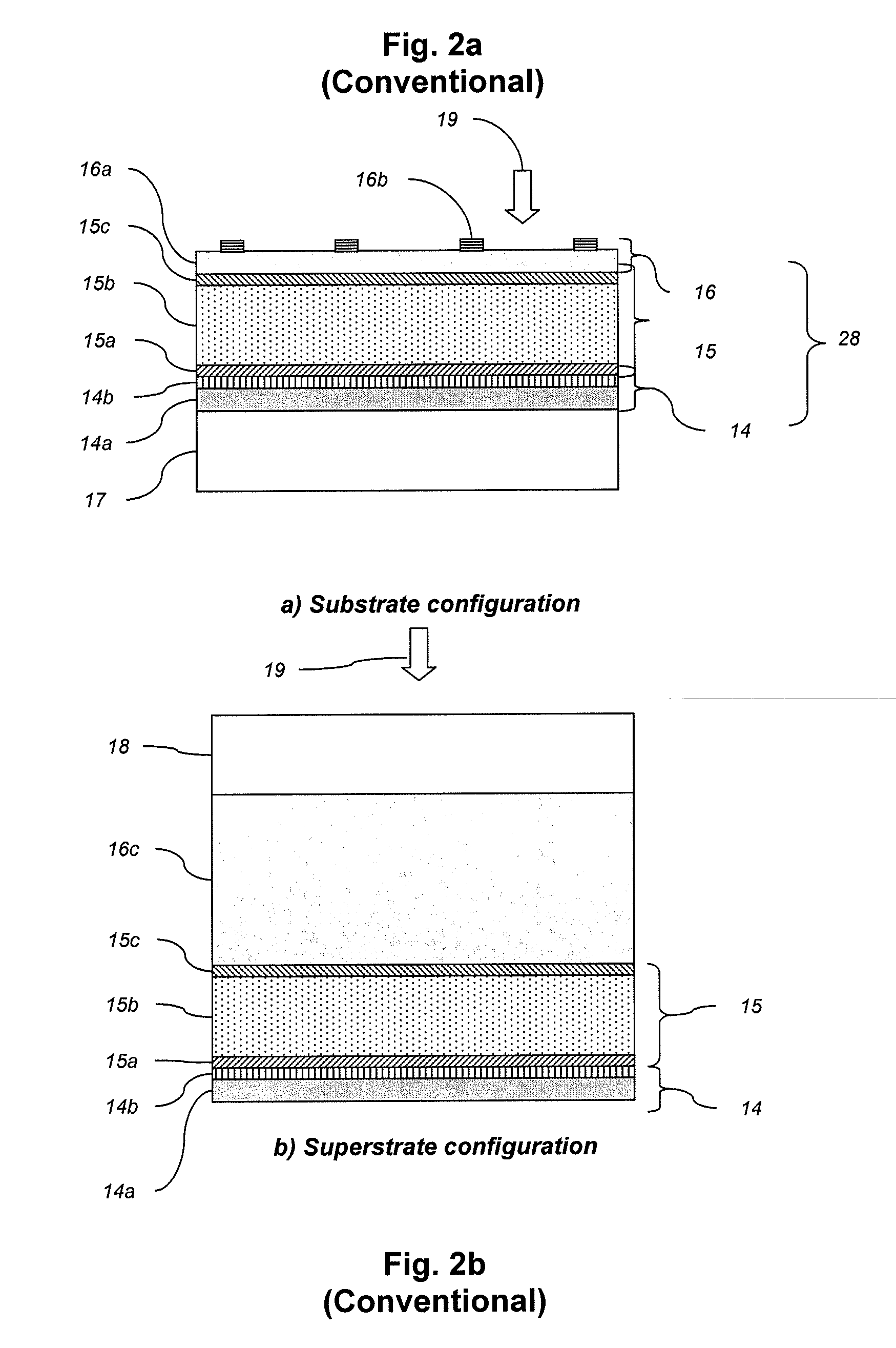Integrated display and photovoltaic element
a technology of photovoltaic elements and integrated displays, which is applied in the manufacture of electric discharge tubes/lamps, basic electric elements, instruments, etc., can solve the problems of reducing contrast, operating at voltages too high to be compatible with active matrix driving circuits, and enhancing light trapping and absorption of specific wavelengths, so as to improve the brightness of the display. , the effect of generating electrical power efficiently
- Summary
- Abstract
- Description
- Claims
- Application Information
AI Technical Summary
Benefits of technology
Problems solved by technology
Method used
Image
Examples
first embodiment
[0100]In a first embodiment of the invention, shown in FIG. 4, the display device is a polymer network liquid crystal display (PN-LCD), as described by Y. Asaoka et al in SID Symposium Proceedings 2009 paper 29.1 and in the other publications referred to above. The driving electronics include a memory device in every pixel which greatly reduces power consumption of the display. This memory device is also described in the paper by Asaoka.
[0101]Voltage is applied to the PN-LCD layer 10 by a transparent ITO common electrode 5 on the top substrate 2, and by ITO pixel electrodes 9 on the lower substrate 1. Below the pixel electrodes is a thin-film amorphous silicon PV element 21, which has the same structure as in FIG. 2(a). Each pixel electrode is connected to the driving electronics 22 for that pixel (which include a memory element as described above) by a conducting path or via connection 23 through the PV element 21.
[0102]FIG. 5 shows a schematic view of the structure of two adjacent...
second embodiment
[0111]A second embodiment of the invention is the same as the first embodiment except that the liquid crystal layer 10 is a reverse-mode polymer network LCD, as described, for example, in U.S. Pat. No. 5,188,760 (Hikmet; Philips) mentioned above.
third embodiment
[0112]A third embodiment of the invention is the same as the first embodiment except that the liquid crystal layer 10 is replaced with either an electrowetting or an in-plane electrophoretic layer.
PUM
| Property | Measurement | Unit |
|---|---|---|
| refractive index | aaaaa | aaaaa |
| thickness | aaaaa | aaaaa |
| wavelengths | aaaaa | aaaaa |
Abstract
Description
Claims
Application Information
 Login to View More
Login to View More - R&D
- Intellectual Property
- Life Sciences
- Materials
- Tech Scout
- Unparalleled Data Quality
- Higher Quality Content
- 60% Fewer Hallucinations
Browse by: Latest US Patents, China's latest patents, Technical Efficacy Thesaurus, Application Domain, Technology Topic, Popular Technical Reports.
© 2025 PatSnap. All rights reserved.Legal|Privacy policy|Modern Slavery Act Transparency Statement|Sitemap|About US| Contact US: help@patsnap.com



